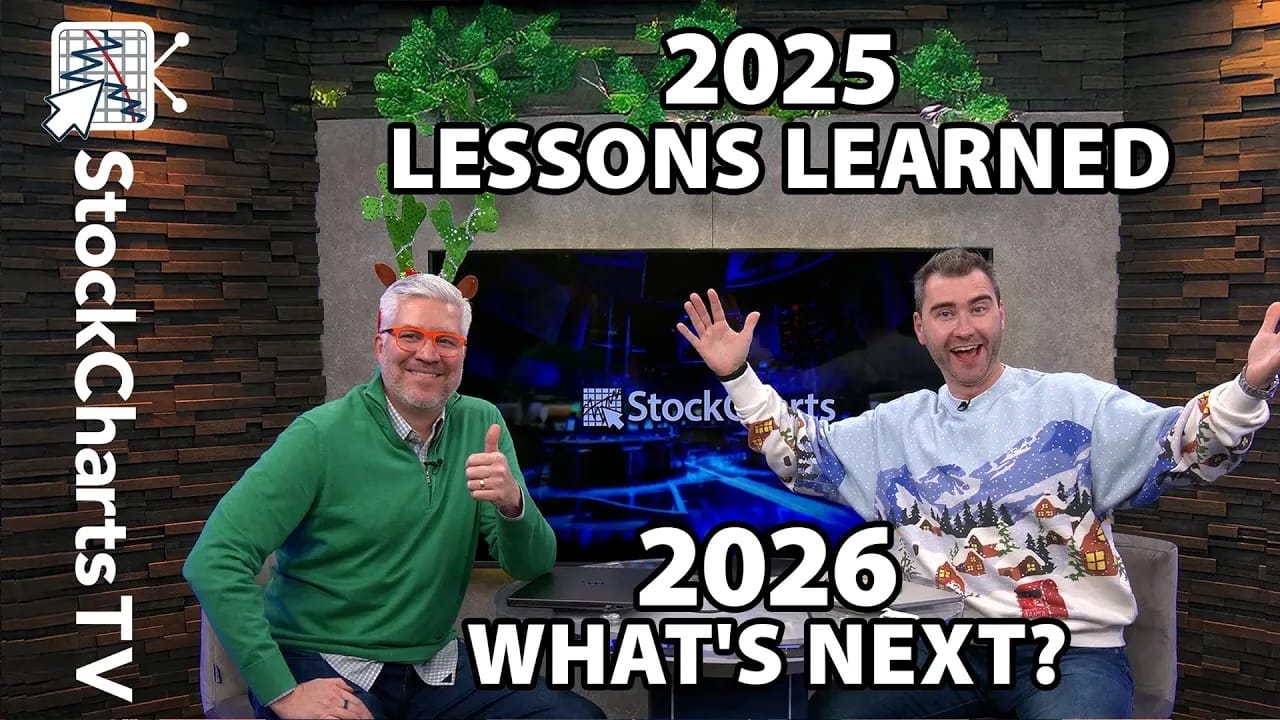WHY BALTIC DRY INDEX HASN'T WORKED THIS YEAR -- FLATTENING YIELD CURVE GAVE BIG BOOST TO HOMEBUILDERS -- USING SCTRS TO SPOT ETF AND STOCK LEADERS -- RALLY IN REGIONAL BANKS ADDS CREDIBILITY TO HOMEBUILDING RALLY
BALTIC DRY INDEX DIVERGES FROM GRAIN PRICES... Chip Anderson recently told me that he has received a lot of inquiries about the strange performance of the Baltic Dry Index, and whether that performance carried any important messages. An article in Barrons this morning (Saturday) prompted me to write something on it. The Baltic Dry Index measures the cost to ship dry freight by sea. Dry freight refers mainly to commodities like coal, iron ore, and grains. The reasoning is simple. When there's more global demand for those commodities, which are normally shipped by sea, freight rates go up. That's why the trend of the Baltic Dry Index has been viewed as a barometer of commodity demand. As a result, the BDI has usually trended in the same direction as commodity prices. What has provoked the questions about the BDI is why it has diverged from commodity prices over the last two years. Chart 1 compares the BDI (black line) to the price of wheat (brown line) over the last ten years. You can see both lines trending in the same direction throughout most of that decade. Since the start of 2010, however, the BDI has fallen while wheat (and most other grains) have risen. The area in the box shows that divergence. According to Barrons, the drop in the BDI is tied to a "massive oversupply of ships that skewed the index". According to Jefferies & Co, the global fleet of dry-haul ships grew over 10% during 2010 and 2011. The oversupply of ships caused rates to drop (and had little to do with demand for commodities). The Barrons article suggests that the glut of ships is about to end and will return to a more normal level by the end of the year. The reduction in the number of ships by yearend "will restore the BDI to its former luster as as indicator of commodities demand." [The entire Barrons article can be found in today's edition on page M11 under the title "Baltric Dry: Not Washed Up"].

(click to view a live version of this chart)
Chart 1
FLATTENING YIELD CURVE BOOSTS HOMEBUILDING STOCKS... I attended a financial conference on Thursday evening during which the speaker stated that he saw no signs anywhere of improvement in the housing industry. Judging from what I hear on TV, that seems to be the consensus of Wall Street and the economic community. How then do we explain the fact that the Dow Jones US Home Construction Index has risen more than 58% since October lst, while the S&P 500 has gained 18%? If you believe, as I do, that markets always lead their fundamentals, their strong performance certainly hints that the housing situation is starting to improve. Chart 2 provides one economic explanation for the new optimism in housing stocks. The green line in Chart 2 is a version of the "yield curve" which plots the difference between 3 month and 10-Year U.S. interest rates. [The more traditional 2-year - 10-year spread shows the same trend]. The key to the chart is the sharp drop in the yield spread that occurred during the third quarter (green circle) as bond yields fell sharply. That signaled that the yield curve was finally flattening which has been the intention of the Fed. Two previous bouts of "quantitative easing" announced in November 2008 and 2010 resulted in a steeper yield curve (see boxes). Last September, the Fed announced Operation Twist which entailed the Fed's selling short-term bonds and buying long-range maturities. The stated intention was to drive bond yields lower and flatten the yield curve. That was done primarily to help the housing industry. That strategy finally started to work when the spread between long and short-term rates turned down. I don't think it's a coincidence that the upturn in the housing index (brown arrow) started at the exact point when the yield spread broke down.

(click to view a live version of this chart)
Chart 2
USING SCTRS TO FIND TOP ETFS ... One of the recent additions to the Stockcharts technical arsenal has been its ranking of individual stocks and exchange traded funds. The actual rankings (called SCTRS)) are based on a combination of technical indicators. Near the bottom of the home page, you'll see a list entitled S&P 500 SCTRS which ranks the top performing stocks in the S&P 500. Just to its right, ETF SCTRs ranks the top performing ETFs. Let's start there. Chart 3 shows a chart of the DJ US Home Construction iShares (ITB) which is based on the index shown in Chart 2. You can see the sharp upturn in the ITB which started during October and has resulted in the breaking of a two-year resistance line and its early 2011 high. The gray line just below the ITB is its relative strength line (ITB divided by the S&P 500). The RS line broke its resistance line a bit earlier and is rising as well. That shows market leadership since last October. The line along the bottom is the ETF SCTR. As of today, the ITB is ranked fifth of all existing ETFs with a ranking of 99.5. The black arrow shows the upturn in the ETF SCTR that started last October. While looking at the SCTR list is very helpful, the ability to actually chart the SCTR line makes the tool even more valuable.

(click to view a live version of this chart)
Chart 3
PULTEGROUP IS TOP RANKED STOCK SCTR... When investors see a particular group like homebuilders turning up, they can buy an ETF (like the ITB) or an individual stock in that group. Given the recent strength in the housing group, it's not surprising to see homebuilder names on the S&P 500 SCTRS leader list. [As the name implies, that list only includes S&P 500 stocks]. In fact, the top ranked stock today is PulteGroup (PHM), which is a homebuilder with a rank of 99.9. [Lennar also has a leading rank of 99]. Chart 4 shows PHM turning up during October and rising to the highest level in more than a year. Its relative strength ratio (below chart) has turned up as well with both breaking down trendlines. The SCTR line for PHM is the bottom line in Chart 4, The up arrow shows the sharp upturn in the SCTR line that started in October. Interestingly, the SCTR line turned up before the relative strength ratio which is not unusual. It's also worth noting that the SCTR line has reached the highest level in more than two years. That suggests that this homebuilding rally is more than just another bear market bounce. "Relative" performance is an important part of market analysis. The use of SCTRS adds a valuable new way to measure that. You can do it by looking at the SCTR lists. You can also plot them. [The SCTR Line is included in the Sharpchart indicator list].

(click to view a live version of this chart)
Chart 4
REGIONAL BANKS RISE WITH HOMEBUILDERS... Another fundamental factor supporting the recent jump in homebuilders is the fact that regional banks have risen along with them. Chart 5 compares the KBW Regional Banking SPDR (green line) the the DJ Home Construction iShares (brown line) over the last three years. The close correlation between the two lines is obvious, and is confirmed by the 60-day Correlation Coefficient line (below chart) which has a current value of .97. Since banks are closely tied to mortgages, it's no surprise to see the two groups rising together and reinforcing each other's uptrends (another factor that's escaped Wall Street notice). At the moment, both groups look over-extended and vulnerable to profit-taking (as is the rest of the market). The main point of this message is to demonstrate that there are a number of technical and fundamental factors behind the surge in banks and homebuilders. A second point is to show some tools that enabled us to spot those two upturns a lot earlier. A December 22 Market Message headline read: "Housing ETFs clear 200-day lines...A number of regional banks are also clearing 200-day lines". A December 29 message was headlined: "Homebuilders continue to show strength -- Regional Bank SPDR is top banking ETF -- Regional banks and homebuilders may provided 2012 surprises to the upside." The trick in sector rotations is to spot new leaders as early as possible. One of the best ways to do that is keep a close eye on relative strength measures which include SCTRS.

(click to view a live version of this chart)
Chart 5
HOMEBUILDERS APPEAR TO BE BOTTOMING... One of the basic premises of technical analysis is that price action is a leading indicator of any market's fundamentals. That's one of the reasons why we chart markets. The direction of homebuilders, therefore, tells us whether the housing industry is getting better or worse. More importantly, the chart of homebuilders tells us whether or not this is a good time to be buying them. The monthly bars in Chart 6 plot the DJ US Home Construction Index ($DJUSHB). [I'm using a log scale which is better for long-term trendline analysis]. The breaking of the rising support line during the first half of 2006 (yellow circle) signaled the end of the bull market in homebuilders (and gave a clear early warning that the housing boom was ending). Two declining trendlines are drawn on the chart. The steeper line was broken in the middle of 2009 (first green circle) which signaled that the homebuilding downtrend had probably ended. After trending sideways between late 2008 and late 2011, the housing index recently broke the flatter trendline (second green circle). That increases the odds that the housing group is starting to trend higher. The last hurdle it needs to overcome is its early 2010 high. Chart 6 is a perfect example of how stocks bottom. First comes the downtrend, which is then followed by a sideways bottoming pattern (which often lasts as long as the downtrend). The bottoming pattern is characterized by relatively flat trading which includes at least one retest of the first bottom. That successful retest took place during 2011, and is usually followed by a test of the upper part of that trading range (the 2010 high). If that 's broken to the upside, a major new uptrend will have been initiated. Wall Street and the economic community ignored the 2006 homebuilding collapse and stayed positive way too long. So did the Fed. The fact that they're ignoring (or are unaware of) the recent homebuilder rally suggests to me that they'll miss the housing upturn as well. There's no need for you to wait for them.












